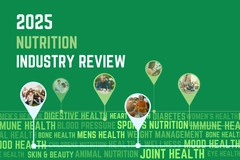Amyris commercializes fermented CBD-alternative

02 Sep 2020 --- Presenting a promising alternative to cannabidiol (CBD), Amyris has successfully scaled up the commercial production of cannabigerol (CBG), which is produced via industrial fermentation. The US-based company expects to deliver around one ton of high purity CBG through fermentation as an alternative to the traditional production method of extraction from the Cannabis sativa L. plant.
Often referred to as the “stem cell” of cannabinoids, CBG is the precursor from which all other cannabinoids are synthesized. The non-psychoactive cannabinoid presents significant therapeutic potential, making it highly interesting for researchers and consumers alike, flags Amyris.
“The combination of CBG with Amyris’ sugarcane-based squalene provides some of the highest efficacy results for topical applications. Early studies indicate that CBG has the potential to deliver better efficacy than CBD in about one-third of current CBD topical applications. We are very excited about the disruptive nature of this molecule for potential skin care applications and through flavor and fragrance partnerships and our cosmetic distribution channels,” John Melo, Amyris President and CEO, tells NutritionInsight.
Early testing on skin models demonstrates CBG’s better performance for various topical indications than CBD – specifically around antioxidant, pain, inflammation and anti-acne applications. Melo expects to expand these tests and consumer applications by the end of the year.
Additionally, the first commercial revenue from the sale of this molecule is anticipated later in 2020. This is set to be in applications that are excluded from Amyris’s current collaboration agreements. Product margins are anticipated to operate above the current industry average realized by existing publicly traded CBD suppliers.
Melo notes that, while the company is currently focused on continuing to scale CBG, it is targeting at least two new molecules in the coming month. Notably, he confirms that the technology can be extended into CBD. “The advantage of our platform is the ability to target and scale the development of other cannabinoids. We have a broad portfolio at work.”
Converting sugar to CBG
The biotechnology works by engineering yeast to create and produce differentiated high-value products. Melo explains that biology is adept at converting sugar to a variety of molecules through a series of reactions called metabolic pathways. Additionally, producing cannabinoids requires utilization of the terpenoid biological pathway, of which Amyris is a major producer.
“As with our nine previously commercialized products, Amyris scientists utilized a proprietary platform encompassing molecular biology, genetics, automation, machine learning and fermentation to optimize the reactions in yeasts to consume sugar and efficiently convert it to CBG,” he details.
Notably, the molecule was developed from initial target to full-scale production in less than nine months, despite the need to adapt Amyris’ fermentation and purification toolkit to the cannabinoid product family.  Alternatives to CBD are on the rise, in part due to the regulatory uncertainty around hemp ingredients.
Alternatives to CBD are on the rise, in part due to the regulatory uncertainty around hemp ingredients.
Bypassing regulatory uncertainties
According to the company, this fermentation process is well-positioned to result in the lowest cost CBG with higher purity (no THC), which is expected to unlock CBG’s adoption. Many businesses in the CBD space have faced regulatory uncertainty, due in part to difficulties around monitoring THC content.
“Because our fermentation process yields a high purity CBG product that contains no THC, we avoid the uncertainties surrounding plant-sourced materials that other producers face. We have also confirmed that the product is not regulated as a controlled substance,” explains Melo.
Symrise has also been exploring producing cannabinoids, with the company developing a nature-identical alternative to traditional CBD in June. It says that this allows the pharmaceutical industry to access a synthetically produced CBD that is suitable both as an active pharmaceutical ingredient and as an intermediate product for the development of new substances.
Usage of hemp-derived CBD has been soaring due to its touted health effects, with Innova Market Insights reporting average annual growth of 165 percent in product launches tracked with the ingredient (Global, CAGR 2015 to 2019). However, other alternatives like palmitoylethanolamide (PEA) and cannabinol (CBN) are also seeing increasing interest.
Earlier this summer, Holland & Barrett launched Vitaboost Levagen, marketed as the first commercially available effervescent supplement to contain Gencor’s PEA ingredient, Levagen+. Meanwhile, Beraca introduced Beracare CBA (Cannabinoid Active System) as a “natural and safe alternative” to the cannabis extract.
By Katherine Durrell












